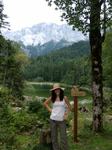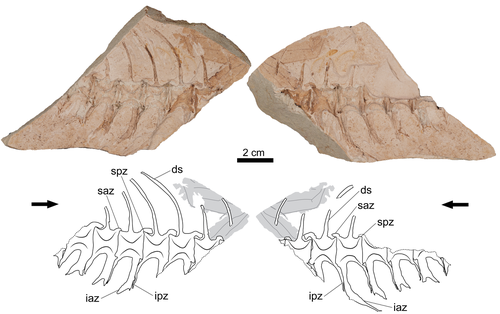
LÓPEZ-ARBARELLO Adriana
- Unidad Ejecutora Lillo (CONICET-FML), Fundación Miguel Lillo, San Miguel de Tucumán, Argentina
- Comparative anatomy, Evolutionary biology, Evolutionary patterns and dynamics, Evolutionary theory, Macroevolution, Morphological evolution, Morphometrics, Paleobiogeography, Phylogenetics, Systematics, Vertebrate paleontology
- recommender
Recommendation: 1
Reviews: 0
Recommendation: 1

A new tuna specimen (Genus Auxis) from the Duho Formation (Miocene) of South Korea
Rare Miocene tuna fossil unearthed in South Korea
Recommended by Adriana López-Arbarello based on reviews by 2 anonymous reviewersA newly discovered fossil of a tuna fish from the Miocene has been identified in the Duho Formation in Pohang City, South Korea (Suh et al., 2025). The new find, attributed to the genus Auxis, represents only the second valid fossil record of this genus globally, thus contributing to the understanding of evolutionary history within the Scombridae family (Collette and Nauen, 1983; Nam et al., 2021).
The partially skeleton GNUE322001 consists of a few articulated caudal vertebrae preserving diagnostic features of the genus Auxis (Suh et al., 2025). Although it is not possible to compare the new find with the only fossil species known to date, †A. koreanus Nam et al., 2021, the significant difference in size suggests that it could be a different species. The fossil, preserved in fine-grained mudstone, also offers insights into taphonomic processes, suggesting that the specimen underwent significant decomposition in a low-energy sedimentary environment before burial.
The new record of Auxis supports interpretations of the Duho Formation as a pelagic and subtropical marine habitat, shaped by upwelling activities during the Miocene (Graham and Dickson, 2000; Kim and Paik, 2013; Nam et al., 2021). This discovery emphasizes the significance of upwelling zones in fostering biodiversity and highlights the value of fossil records in reconstructing prehistoric marine ecosystems (Lalli and Parsons, 1997; Wang and Lee, 2019).
References
Collette, B. B., and Nauen, C. E. (1983). Scombrids of the world: An annotated and illustrated catalogue of tunas, mackerels, bonitos, and related species known to date. Food and Agriculture Organization of the United Nations.
Graham, J. B., and Dickson, K. A. (2000). The evolution of thunniform locomotion and heat conservation in scombrid fishes: New insights based on the morphology of Allothunnus fallai. Zoological Journal of the Linnean Society, 129(4), 419–466. https://doi.org/10.1111/j.1096-3642.2000.tb00612.x
Kim, J., and Paik, I. S. (2013). Chondrites from the Duho Formation (Miocene) in the Yeonil Group, Pohang Basin, Korea: Occurrences and paleoenvironmental implications. Journal of the Geological Society of Korea, 49(3), 407–416. https://doi.org/10.14770/jgsk.2013.49.3.407
Lalli, C. M., and Parsons, T. R. (1997). Biological oceanography: An introduction (2nd ed). Butterworth Heinemann.
Nam, G.-S., Nazarkin, M. V., and Bannikov, A. F. (2021). First discovery of the genus Auxis (Actinopterygii: Scombridae) in the Neogene of South Korea. Bollettino Della Società Paleontologica Italiana, 60(1), 61–67. https://doi.org/10.4435/BSPI.2021.05
Suh, D., Kim, S.-H., and Nam, G.-S. (2025). A new tuna specimen (Genus Auxis) from the Duho Formation (Miocene) of South Korea. bioRxiv, 605724, ver. 5 peer-reviewed by PCI Paleo. https://doi.org/10.1101/2024.07.29.605724
Wang, Y.-C., and Lee, M.-A. (2019). Composition and distribution of fish larvae surrounding the upwelling zone in the waters of northeastern Taiwan in summer. Journal of Marine Science and Technology, 27(5), article 8. https://doi.org/10.6119/JMST.201910_27(5).0008